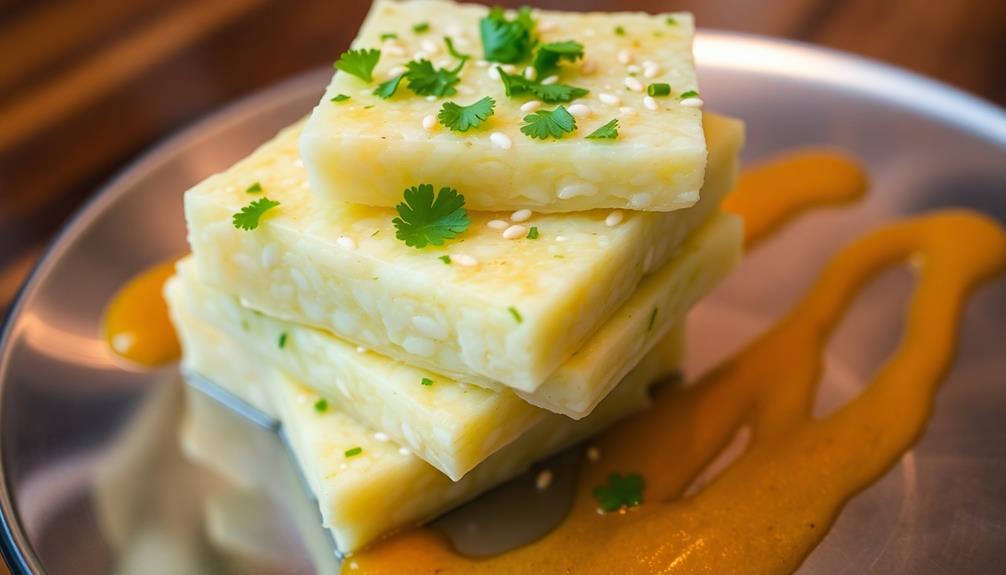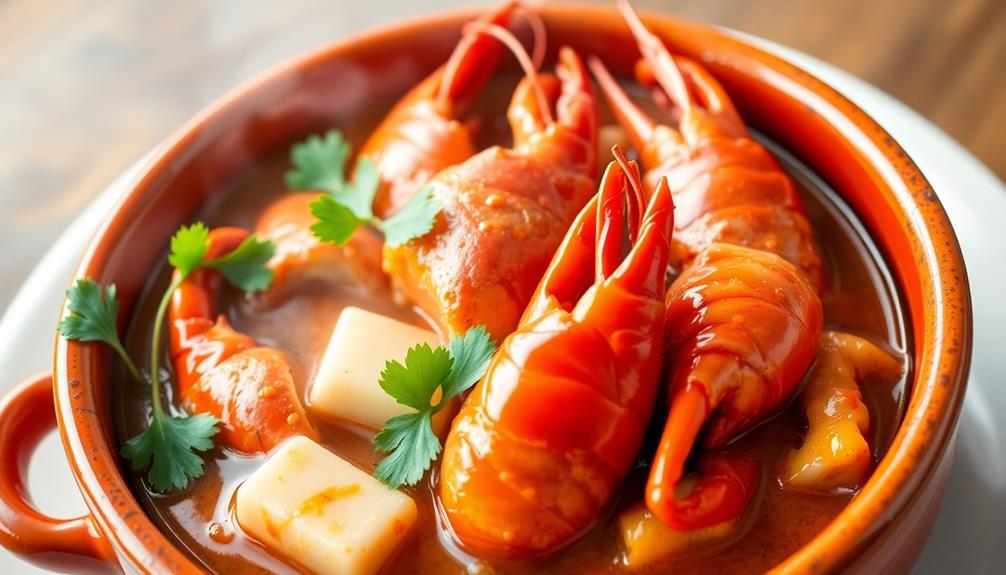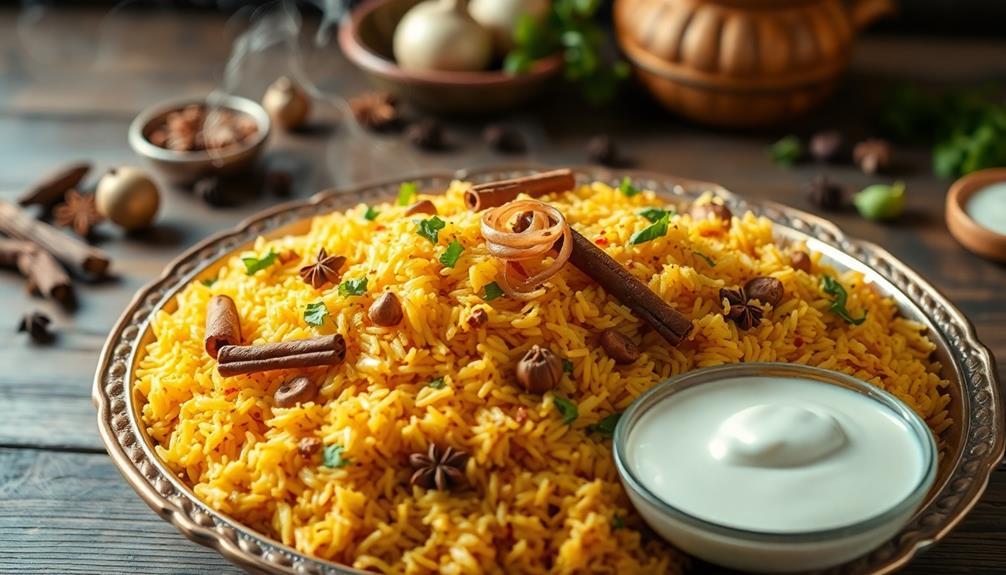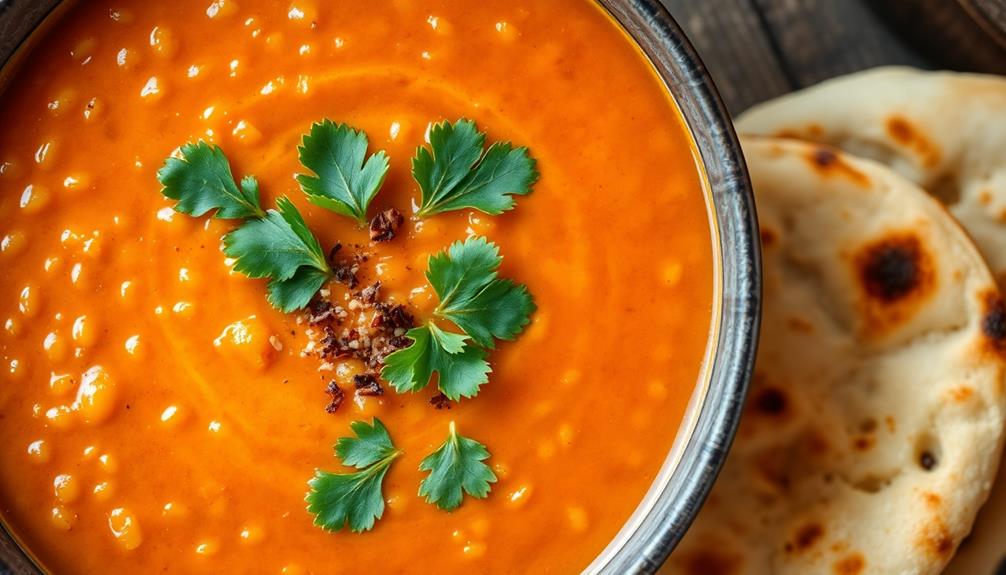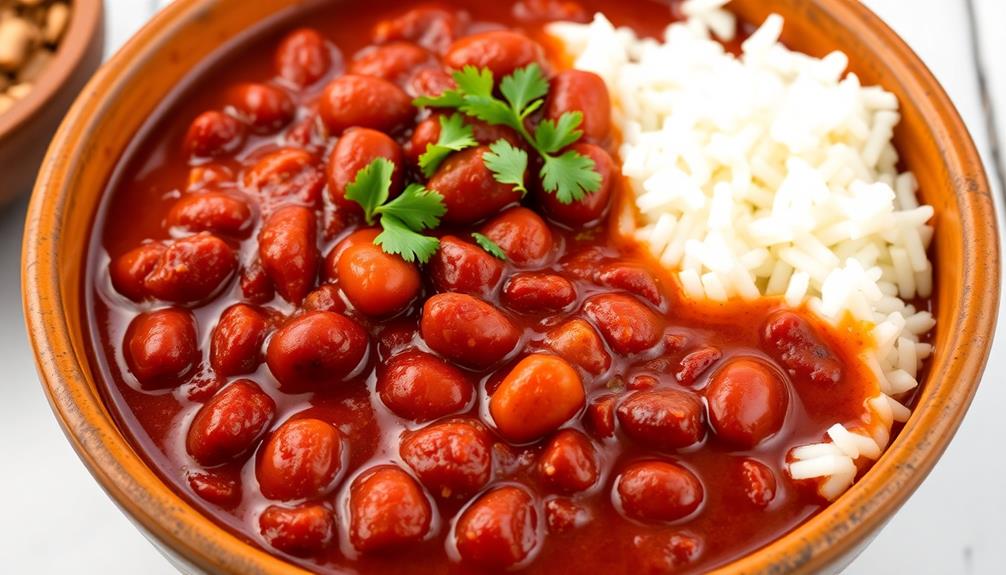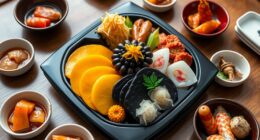Dhokla is a tasty, steamed snack from the vibrant cuisine of Gujarat, India. You'll love its light, spongy, and tangy texture, making it a perfect breakfast or tea-time treat. The key is chickpea flour, yogurt, and a touch of spices – all blended together, steamed, and cut into bite-sized squares. Dhokla's unique flavor comes from fermentation, giving it a fluffy crumb. Serve it with chutneys for an extra zing. Whether you're new to dhokla or a longtime fan, there's always more to discover about this versatile and delightful dish.
Key Takeaways
- Dhokla is a savory, steamed snack originating from Gujarati cuisine in India, made from fermented chickpea flour and yogurt.
- The unique light, spongy, and mildly tangy texture of dhokla is achieved through the fermentation process.
- Dhokla is a healthy snack option, high in protein from chickpea flour and low in calories compared to fried snacks.
- Dhokla can be served with various chutneys and yogurt, making it a versatile dish suitable for breakfast, tea-time, or as an appetizer.
- Dhokla can be customized with different ingredients and cooking methods, allowing for diverse flavor profiles and regional variations.
History
Although the exact origins of dhokla are unclear, it's believed to have originated in the state of Gujarat, India. This savory, spongy cake has been enjoyed for centuries, with its roots tracing back to the Gujarati cuisine.
Over time, the recipe has evolved, but the core ingredients – steamed chickpea batter and spices – have remained the same.
Dhokla's popularity has spread far beyond its home state, becoming a beloved snack across India. It's often served as a side dish or appetizer, adding a unique flavor and texture to meals.
The process of making dhokla is surprisingly simple, involving just a few steps of mixing, steaming, and garnishing. Its versatility allows for creative variations, with cooks experimenting with different seasonings and accompaniments.
Whether you're a long-time dhokla fan or new to this delightful delicacy, you're sure to appreciate its rich history and delicious taste.
Recipe
Dhokla is a popular savory cake from the Indian state of Gujarat. It's a steamed snack made from a fermented batter of chickpea flour, yogurt, and various spices. Dhokla is a light, spongy, and mildly tangy dish that's often served as a breakfast or a tea-time snack. Many variations of dhokla exist, including khaman dhokla, which is especially popular in Gujarat. Traditionally, dhokla is garnished with mustard seeds, curry leaves, and grated coconut, giving it a burst of flavor and texture. It is often served with green chutney or a traditional Indian flatbread called roti or naan.
The unique texture of dhokla comes from the fermentation process, which helps to create a fluffy and airy crumb. The dish is also highly versatile, as it can be flavored with different herbs, spices, and chutneys to suit individual preferences.
Ingredients:
- 1 cup chickpea flour (besan)
- 1 cup yogurt
- 1 teaspoon baking soda
- 1 teaspoon sugar
- 1 teaspoon ginger-green chili paste
- 1 teaspoon lemon juice
- Salt to taste
- 2 tablespoons water
Cooking Instructions:
In a mixing bowl, combine the chickpea flour, yogurt, baking soda, sugar, ginger-green chili paste, lemon juice, and salt.
Add water gradually and mix well to form a smooth, thick batter. Cover the bowl and let the batter ferment for about 4-6 hours, or until it doubles in volume.
Grease a steamer or idli plates and pour the fermented batter into the prepared containers. Steam the dhokla for about 12-15 minutes, or until a toothpick inserted in the center comes out clean.
Remove the steamed dhokla from the steamer and let it cool for a few minutes before cutting into desired shapes.
Tips:
- For a softer and fluffier texture, you can add a pinch of eno (fruit salt) to the batter just before steaming.
- Garnish the dhokla with grated coconut, chopped coriander, and a tempering of mustard seeds, curry leaves, and green chilies for added flavor.
- Dhokla can be served with chutneys, such as tamarind chutney or green chutney, for a complete snack.
Cooking Steps
First, you'll need to soak the chickpea flour overnight, then drain and grind it into a smooth batter.
Next, you'll add the tempering ingredients – that's the fun part!
Step 1. Soak Chickpea Flour Overnight
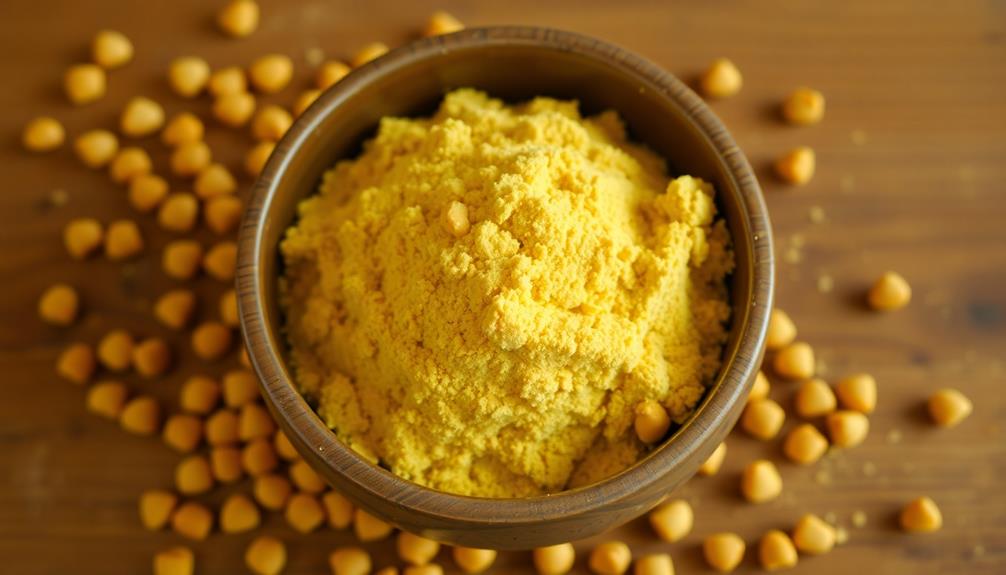
Soaking the chickpea flour overnight is a crucial step in crafting the perfect dhokla. You'll want to measure out the flour and place it in a large bowl.
Then, simply add water until the flour is fully submerged. Cover the bowl and let it sit on the counter overnight. This gentle soaking softens the flour, making it easier to work with later on.
In the morning, you'll notice the texture has transformed – the flour will have absorbed the water, becoming smooth and pliable. Giving the flour this extra time to soak ensures your dhokla batter will have the perfect consistency when you're ready to mix it up.
Don't skip this important step! Taking the time to properly soak the flour is what sets dhokla apart, creating a wonderfully light and fluffy final result.
With just a little prep work the night before, you're well on your way to dhokla success.
Step 2. Drain and Grind Soaked Chickpea Flour
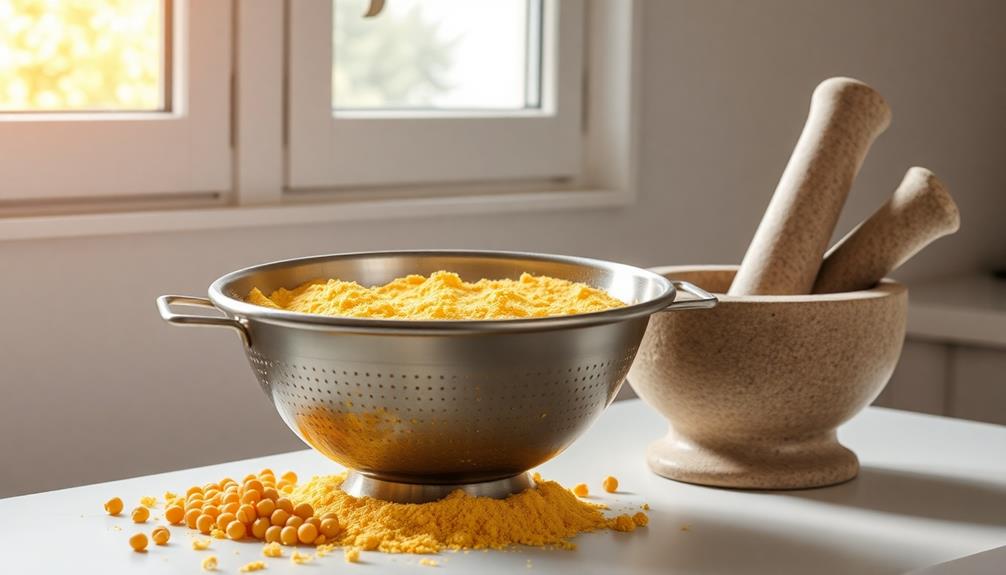
After letting the chickpea flour soak overnight, it's time to move on to the next step. Grab a colander and drain the soaked flour, getting rid of any excess water.
Don't worry if there are a few lumps – you'll smooth those out in the next part.
Now, it's time to grind the soaked flour into a smooth batter. You can use a blender, food processor, or even a good old-fashioned mortar and pestle for this.
Just add a little water as you go to help the flour blend into a lump-free, creamy consistency. Keep an eye on the texture and add more water if it's too thick.
You want the batter to be smooth and pourable, but not too runny.
Once you've got the perfect batter, you're ready to move on to the next step in making delicious dhokla.
Stay tuned for the next set of instructions!
Step 3. Add Tempering Ingredients
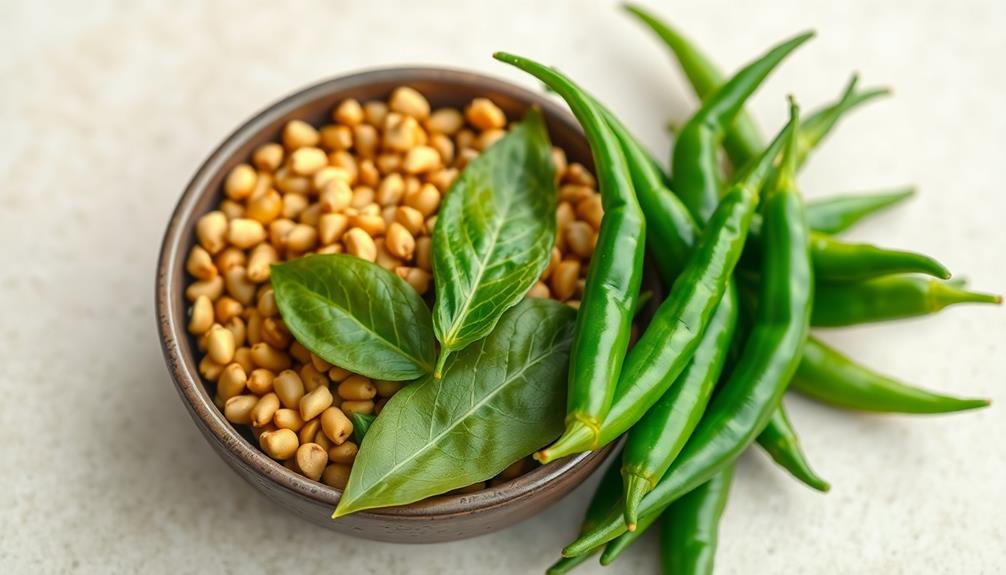
To add the tempering ingredients, gather your spices and aromatics.
You'll need mustard seeds, cumin seeds, curry leaves, and green chilies. Gather them all in one spot, so they're ready to go.
Next, heat some oil in a small pan over medium heat. Once the oil is shimmering, add the mustard seeds. They'll start to pop and sizzle – that's exactly what you want!
Toss in the cumin seeds and let them toast for a minute or two, until fragrant.
Now, carefully add the curry leaves and green chilies. Be careful, as they may splatter a bit.
Let the tempering ingredients sizzle for 30 seconds to a minute, allowing the flavors to meld together.
Step 4. Add Baking Soda and Steam
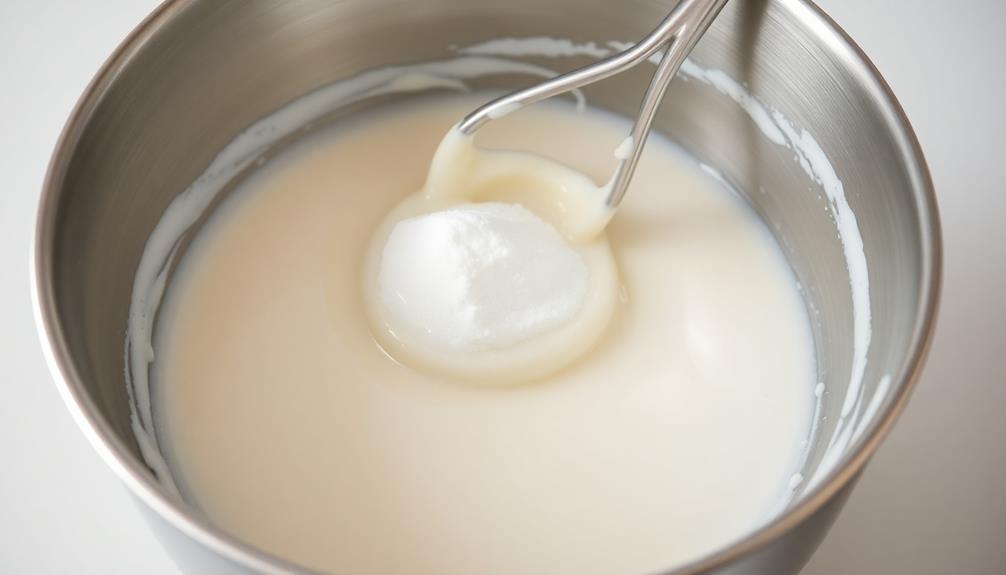
Next, stir in the baking soda. This little addition is the secret to getting that classic dhokla texture you love. The baking soda reacts with the acidic ingredients, creating tiny air bubbles that make the dhokla light and fluffy. Be sure to mix it in thoroughly so the baking soda is evenly distributed.
Now it's time to steam the dhokla. Grab your steamer and bring the water to a boil. Carefully pour the batter into a greased steaming dish or plate. Lower the dish into the steamer, cover, and let the dhokla steam for about 15-20 minutes. The dhokla is done when a toothpick inserted comes out clean.
Once cooked, remove the dhokla from the steamer. Let it cool slightly before cutting into squares.
The steaming process is what gives dhokla its signature soft, spongy texture. With the baking soda and steam, you're well on your way to dhokla perfection!
Step 5. Cut Into Squares
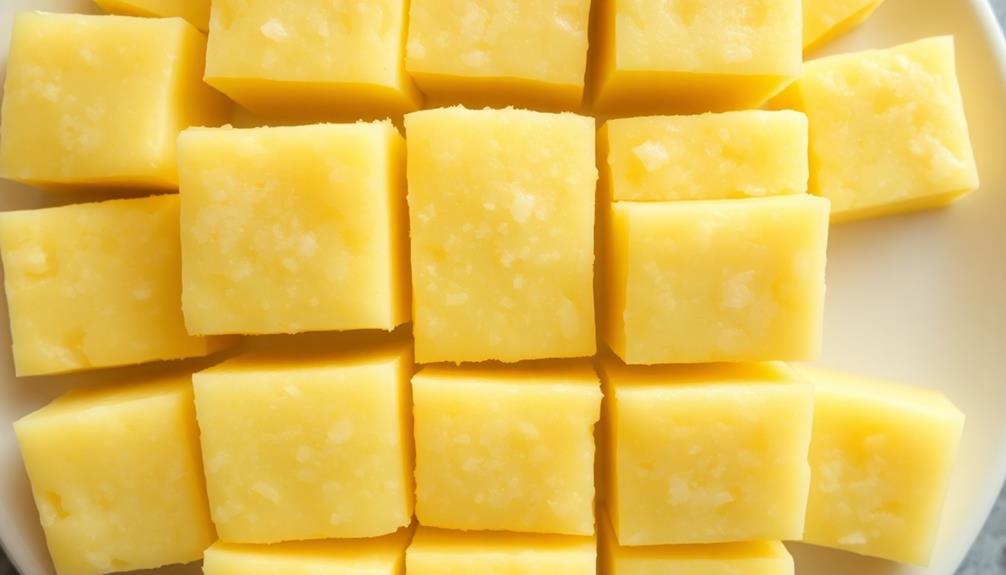
With the satisfying completion of the steaming process, it's time to unleash the full potential of your freshly cooked dhokla. Grab a sharp knife and start cutting your fragrant, spongy creation into neat, bite-sized squares.
Be gentle yet confident in your slicing motions, ensuring each piece is evenly proportioned. As you make the first cut, the dhokla's aroma will fill the air, making your mouth water in anticipation.
Continue slicing, pausing to admire the uniform squares emerging before your eyes. Once you've divided the entire batch, arrange the dhokla squares on a serving platter, making sure they're neatly organized.
This simple step transforms your dhokla from a steamed cake into an inviting, easy-to-eat snack. Now, get ready to delight your family and friends with these perfectly portioned dhokla squares, bursting with flavors that are sure to satisfy.
Final Thoughts
Dhokla is a beloved and versatile dish that has captivated the hearts and palates of many.
Whether you're looking for a quick snack or a delightful accompaniment to a meal, this steamed savory cake is sure to delight.
Don't be intimidated by its delicate nature – dhokla is surprisingly simple to prepare, and the end result is a fluffy, fragrant treat that'll have your taste buds dancing.
As you've learned, the key to perfecting dhokla is all in the cutting.
Be sure to slice it into neat, uniform squares for a polished presentation.
But don't stop there!
Get creative and explore different flavor combinations.
Try adding fresh herbs, spices, or even a sprinkle of chopped nuts for an extra crunch.
The possibilities are endless when it comes to customizing your dhokla experience.
Frequently Asked Questions
What Is the Shelf Life of Freshly Made Dhokla?
Freshly made dhokla has a pretty good shelf life! You can typically enjoy it for 2-3 days after preparing it.
Just be sure to store it properly in an airtight container in the fridge. This'll help it stay nice and moist.
Keep an eye out for any signs it's gone bad, like a sour smell or mold.
But with proper storage, you can savor that homemade goodness for a few days! Isn't that great?
Can I Use Baking Soda Instead of Citric Acid?
You can definitely use baking soda instead of citric acid in your recipe!
Baking soda will help the dhokla rise and give it a nice, fluffy texture. Just be sure to use the right amount – usually about 1/2 teaspoon of baking soda for every cup of flour.
Give it a try and see how it turns out! Let me know if you have any other questions.
How Do I Prevent Dhokla From Becoming Too Soft or Crumbly?
To prevent your dish from becoming too soft or crumbly, you'll want to pay close attention to the recipe and technique.
First, be sure to measure your ingredients precisely – this will help ensure the right balance of wet and dry components.
Additionally, try not to overmix the batter, as this can make the texture too tender.
Finally, be careful not to over-steam or overcook your dish.
With a little practice, you'll get the perfect texture every time!
Is It Possible to Freeze and Reheat Dhokla?
Sure, you can absolutely freeze and reheat dhokla! It's a great way to save time and enjoy this tasty snack whenever you're craving it.
When you're ready to enjoy your frozen dhokla, just pop it in the microwave for a minute or two, and you'll have a hot, fluffy treat in no time.
Just be sure to let it cool for a bit before diving in so you don't burn your tongue. Easy peasy!
What Are the Health Benefits of Consuming Dhokla?
Consuming dhokla can be super healthy for you!
It's packed with vitamins and minerals that help keep your body strong and energized. The savory snack is low in fat but high in protein, which is great for building muscles.
Plus, the fermented batter makes it easy for your body to digest.
